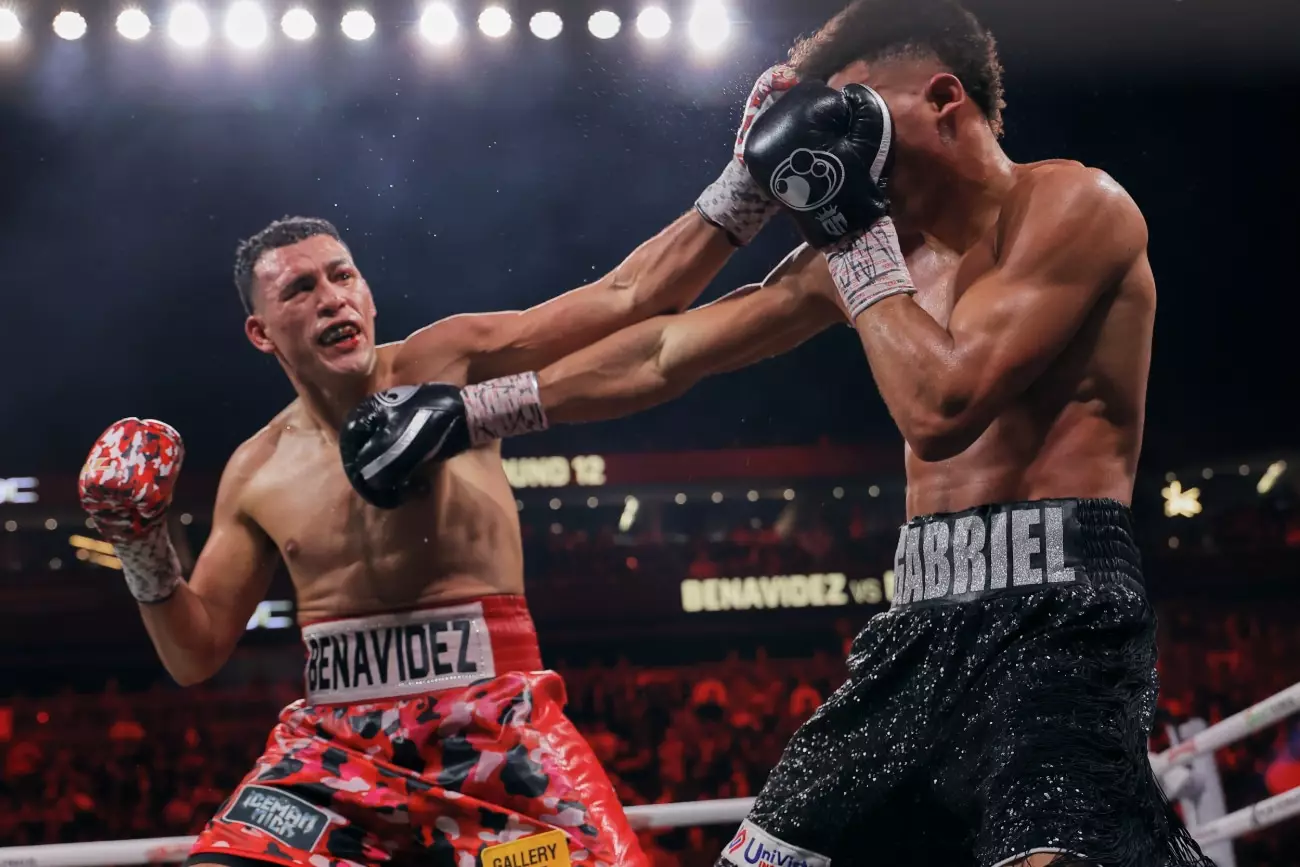The boxing world was treated to a thrilling encounter as WBC interim light heavyweight champion David Benavidez squared off against the unbeaten WBA ‘regular’ light heavyweight champion David Morrell at the T-Mobile Arena in Las Vegas. This showdown, which resulted in a 12-round unanimous decision in favor of Benavidez, is a fascinating case study that invites deeper scrutiny into the intricacies of the fight, the implications of the judges’ scoring decisions, and the prospects of both fighters moving forward.
The bout marked a significant challenge for Benavidez (30-0, 24 KOs), who faced a formidable opponent in Morrell (11-1, 9 KOs). The fight was marked by dramatic moments and turning points, including an 11th-round knockdown that could have shifted the momentum decisively in Morrell’s favor. However, the turning tide was followed by a controversial referee decision when Morrell was docked a point for an alleged post-bell hit, a decision that arguably should not have occurred in so high-stakes a match. This pivotal moment not only altered the dynamic of the fight but also stressed the critical role that officiating can play in shaping outcomes in boxing.
In the aftermath, the judges’ scorecards read 115-111, 115-111, and an astonishing 118-108 in favor of Benavidez, raising eyebrows and igniting debate among fans and analysts alike. The disparity in scores, particularly the last one, signals a concerning trend within the sport wherein subjective interpretations by judges can veer significantly from reality. With a boisterous crowd supporting Benavidez, one must question whether the judges’ perceptions were influenced by the atmosphere rather than the actual performance in the ring. An analysis of the fight could suggest that Morrell’s effective punches throughout various rounds were overlooked in the face of a more jubilant crowd reaction.
Despite the contentious nature of the decision, a rematch seems unlikely—an unfortunate reality for Morrell who, based on many observers’ assessments, seemed to deserve a clearer path to victory. Looking ahead, Benavidez is set to pursue a high-profile clash with the winner of the upcoming rematch between Artur Beterbiev and Dmitry Bivol. Nonetheless, the path forward for both fighters must consider the implications of this bout. Benavidez’s stamina issues surfaced again in this fight, reminiscent of his previous matchup against Oleksandr Gvozdyk, where he also struggled in the late rounds.
Benavidez’s victory may engender feelings of doubt around his ability to maintain elite status in the light heavyweight division, particularly as he faces tougher challenges ahead. Conversely, Morrell’s performance should not be underestimated, as he showcased power and resilience that could very well lead him to future successes. Both fighters represent distinct narratives within boxing—the established champion clinging to his title amid criticisms of performance, and the contender who, despite setbacks, displays the heart and talent of a future star.
The Benavidez-Morrell fight serves as a case study in the complexities of boxing, shedding light on the intersection of athletic performance, officiating, and public perception. The lasting conversations surrounding this fight could inform future matchups and the evolution of the sport itself as each fighter carves out their legacy.


Leave a Reply